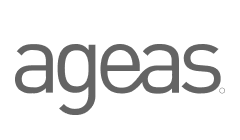Scream of frustration
“Aaarrrghhhh!!!!!!!”, “Why, oh, why”, “Oh Come on” are some expressions for expressing frustration (without the use of profanity). Last Friday, October 12th, The International Moment of Frustration Scream Day was observed, the day on which people share their frustrations with all the citizens of the world and let out their frustrations. People do this by going outside at noon Greenwich (England) time and screaming their lungs out for thirty seconds straight letting go of all bottled up frustrations. Although screaming has a negative connotation and is usually associated with anger, research has shown that ‘controlled’ screaming, where you purposely plan to let out steam verbally, can actually help relieve stress and frustration. Apparently some colleges even encourage their students to let out a “primal scream” to help relieve the stress of finals. The screaming helps them feel better, even if it’s only temporary. Interestingly enough although the goal of the international frustration scream day is for everyone to feel better afterwards, the creators of the day also fear that too much screaming may cause the earth to fall off its orbit…
Given last week’s correction and negative trading sentiment, in the spirit of Frustration Scream day, equity investors most likely let out screams of frustration at the close of last trading week (perhaps even shifting the earth’s orbit a couple of degrees?). Last trading week all eyes were again on rising U.S. Treasury yields, pushed up by strong economic data, and increased trade tensions between the US & China as China’s Central Bank announced to ease rules on banks’ reserves a move seen by investors China might be preparing for a long trade war with the US. Headlines surrounding Italy’s government budget exercise also received quite some attention with financial markets still concerned about a potential downgrade of Italy’s credit rating with S&P scheduled to review Italy’s rating on October 26th. As a consequence, both US & European equities were hit by heavy selling with European shares falling to their lowest level in more than 20 months with on Thursday all sectors in Europe trading in the red. Up until last Wednesday included the Ageas share actually held up quite well outperforming the Eurostoxx 50 by +2.2%. However, on Thursday, in line with overall European equity markets, the negative sentiment also reached Ageas with the share closing 5.4% lower on heaving trading volumes of 1.6 million shares or almost 2.5 times 2018 average daily trading volume. At the end of the trading week the Ageas share eventually closed at EUR 43.46 or -5.7% last trading week. Since the beginning of this year the Ageas share is still up 6.7% outperforming both the Eurostoxx 50 (-8.8%) and the SXIP 600 Insurance index (-4.7%).
